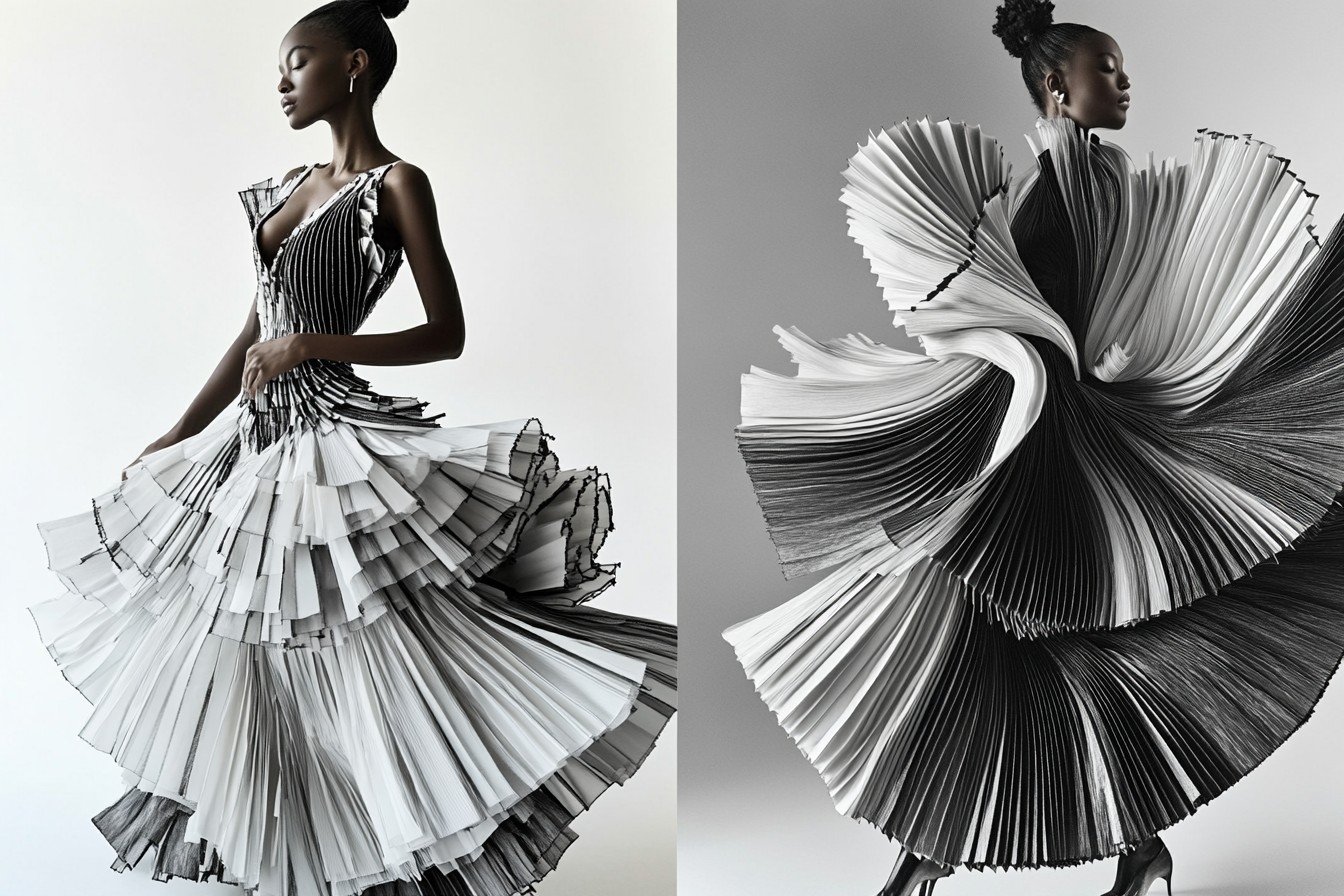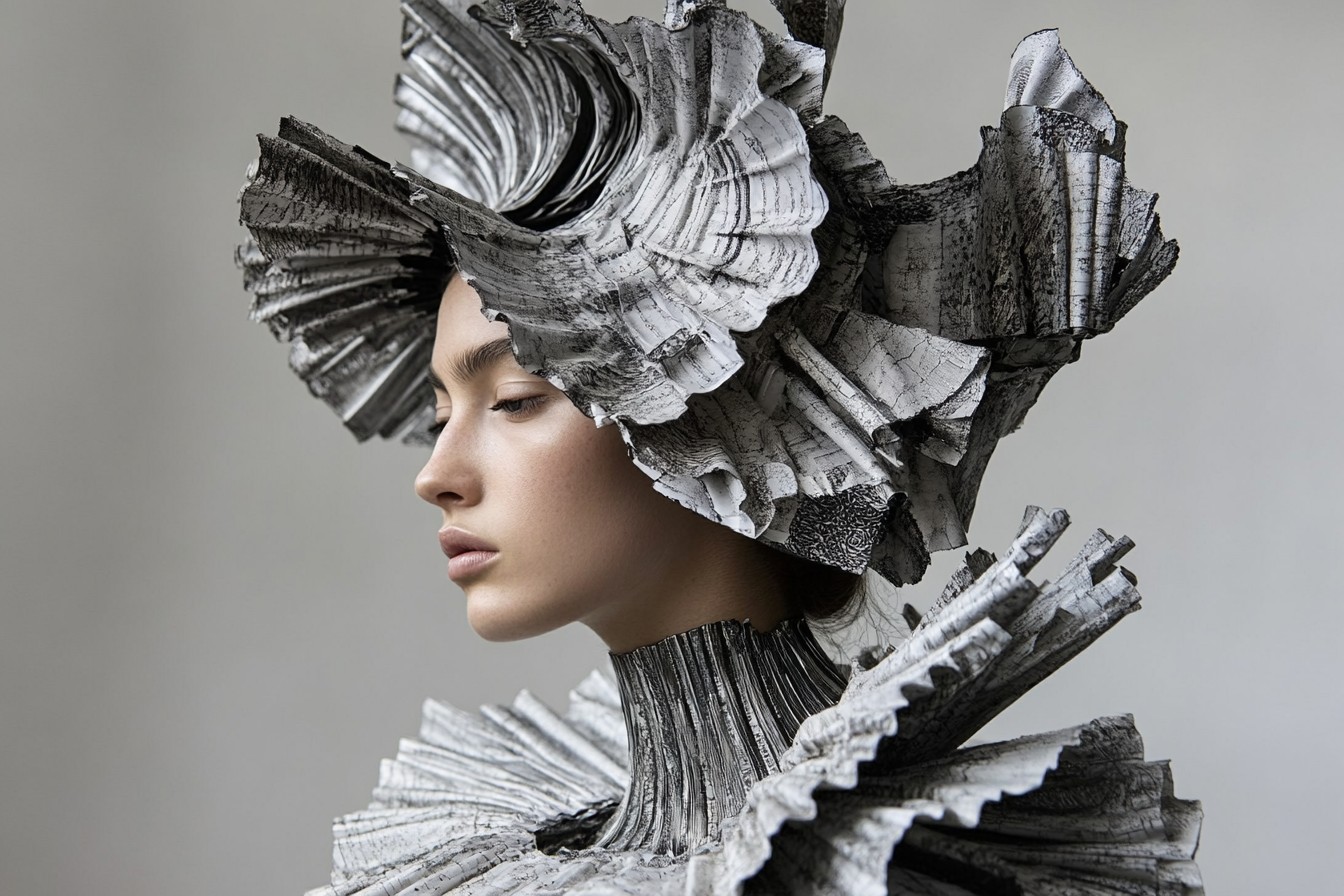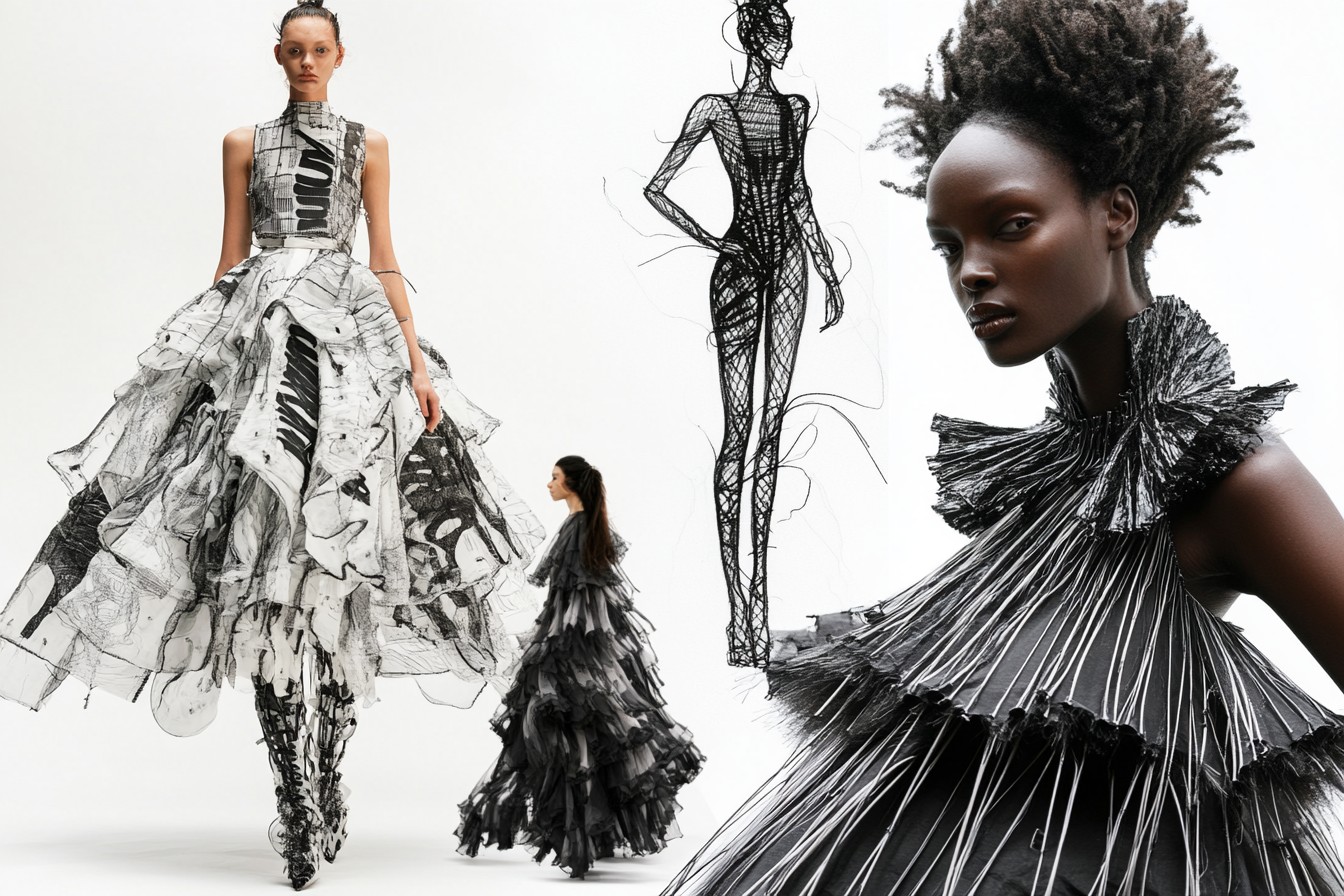There’s a running joke in our office that you can tell exactly when Paris Fashion Week is approaching because British fashion editors suddenly start dressing “extremely French.” Out come the perfectly cut blazers, the immaculate straight-leg jeans, the discreetly expensive loafers, and those silk scarves that somehow look effortlessly chic on them but make me look like I’m about to serve drinks on a budget airline. The transformation is so predictable that our managing editor, Sara, has a specific name for it: “The Gallic Shift.” Last season she actually created a bingo card featuring items like “Breton stripe,” “red lipstick with otherwise bare face,” and “basket bag despite it being February,” and by day two of Paris Fashion Week, she’d ticked off every single square.
Our fascination with French style is nothing new. British women have been trying to capture that elusive Parisian je ne sais quoi since before I was born. But what’s interesting is how this plays out within the fashion industry itself—the people who, theoretically, should be the biggest champions of British design. The truth is, even the most patriotic among us have a carefully curated selection of French brands in our wardrobes, saved for those occasions when only Gallic chic will do. Yet we’re equally devoted to certain British labels that we’d defend to the death against any Continental criticism.

This curious split loyalty has always fascinated me. What exactly are we buying from French brands that we don’t think British ones can provide? And which domestic labels do we secretly think outshine their French counterparts? After some highly unscientific research (read: nosy questions directed at colleagues during wine-fueled post-work debriefs), I’ve identified some patterns that seem to hold true across the British fashion editorial landscape.
First, let’s talk about what French brands bring to our wardrobes that apparently we can’t live without. The most obvious category is the “elevated basic”—those seemingly simple pieces that somehow look infinitely more sophisticated than their British high street counterparts. Katy, our senior fashion editor, puts it brutally: “I’d never buy a white shirt from a British brand if I could help it. They just don’t cut them right.” She swears by Sézane for shirts and blouses, claiming they’re “the only ones that don’t make me look like I’m wearing a school uniform or about to serve canapés at a corporate event.”
There’s something to this. French brands like Sézane, A.P.C., and Rouje have mastered that elusive balance between simplicity and sophistication that British brands often overcomplicate. Katy’s white Sézane shirt has no obvious design features that make it special—no unusual collar, no statement cuffs, no contrasting buttons—and yet it hangs perfectly, makes everything she wears it with look more expensive, and has survived three years of regular wear without losing its shape. When she bought a similar-looking shirt from a mid-range British high street brand, it lasted precisely two washes before starting to twist at the seams like it was auditioning for a contortion act.
Denim is another category where French brands consistently win our loyalty. “British brands either do great fashion denim that looks fantastic but feels like cardboard, or comfortable basics that make your bum look like a deflated balloon,” says Jen, our denim obsessive and features director. “The French somehow manage to do both style and fit.” Her go-to brands are A.P.C. (predictably—show me a fashion editor without a pair of their jeans), Sandro, and occasionally Maje for more trend-driven styles. The perfect French jean, according to Jen, has a higher rise than most British brands offer, a straight leg rather than skinny, and is “just structured enough to hold you in without requiring a hydraulic system to get them on.”
French contemporary brands—those sitting in the “premium high street” bracket—are another area where British fashion editors seem unable to resist the allure of the tricolore. Names like Sandro, Maje, Ba&sh, and Claudie Pierlot crop up repeatedly when you ask editors where they’re willing to splurge a bit more than usual. These brands have somehow nailed what Emily, our shopping editor, calls “achievable aspiration”—clothes that feel special and luxurious but don’t require a trust fund or a guilt-inducing credit card bill.

“They do that smart-casual crossover that British brands struggle with,” Emily explains over coffee one morning, gesturing to her Sandro blazer worn with jeans. “This works for meetings, for dinner, for pretty much anything except very formal events. British brands at this price point often feel either too casual or too corporate.” The French knack for creating pieces that can be dressed up or down without looking out of place in either context seems to be a particular draw. That versatility makes the higher price point easier to justify—you’re effectively buying two wardrobes in one.
Accessories are perhaps where our Francophile tendencies are most pronounced. Even editors who predominantly wear British brands often have a French bag or pair of shoes as their “investment piece.” Clare, our accessories editor who literally spends her days surrounded by the best of British design, still saved up for six months to buy a Polène bag. “French accessories brands have this knack for looking timeless and contemporary simultaneously,” she explains, stroking her beloved Polène with the kind of affection usually reserved for small pets. “They’re never showy but they’re always noticeable to those in the know.”
This idea of subtle recognition—pieces that don’t scream their brand name but are instantly identifiable to the initiated—seems key to the appeal of French accessories. They signal membership in a club that values discernment over flash. As Clare puts it, “No one outside fashion will know what this is or how much it cost, but everyone inside fashion will clock it immediately.” It’s fashion semaphore at its most refined.
But before this starts sounding like a complete French love-in, let’s talk about where British brands reign supreme in editors’ wardrobes. Because despite our periodic Gallic shifts, there are categories where we’re staunchly, proudly British in our buying habits.
Tailoring tops the list. While French blazers get plenty of love, when it comes to proper suits or more formal tailored pieces, British heritage and expertise wins out. “French tailoring can look fantastic, but it’s often cut for a different body shape,” explains Anita, our tailoring aficionado and executive style director. “British tailoring just works better on most British women—we’re generally less petite, for starters.” She swears by brands like Paul Smith Women, Reiss for more affordable options, and The Fold for workwear, claiming they understand the British female form in a way French brands don’t always manage.

There’s also a practical consideration that Anita points out: “British tailoring is designed for British weather. French suiting often uses lighter fabrics that are great in Paris but completely impractical in Manchester in November.” Given that most of us spend at least some of our working lives feeling slightly damp from unexpected rain showers, this is no small consideration.
Knitwear is another category where domestic loyalty runs deep. “British knitwear is just better,” states Mia, our knitwear obsessive, with the conviction of someone prepared to defend this position to the death. “We have a heritage of wool production and knitting that goes back centuries. Why would I buy a French sweater when I can get one from Pringle of Scotland or Johnstons of Elgin that will outlive me?” The commitment to Scottish and English knitwear brands is particularly strong among the more senior editors, who view a good British jumper as something approaching a patriotic duty as well as a sound investment.
Even Mia, however, admits to occasional French dalliances: “I have one Sézane cardigan that I bought in a moment of weakness. It’s very good, but I feel like I’m betraying my principles when I wear it.” The fact that she says this while actually wearing said cardigan says everything about the complicated loyalty British fashion editors feel toward domestic production.
Outerwear—particularly rainwear, for obvious meteorological reasons—is another British stronghold. Brands like Barbour, Burberry, and Mackintosh command fierce loyalty, with editors viewing their weather-beating capabilities as a point of national pride. “French coats look beautiful but they’re designed for a gentle Parisian drizzle, not horizontal Sheffield rain,” says Lucy, who grew up in the north and retains a northerner’s healthy respect for proper waterproofing. Her Barbour jacket is approaching its tenth birthday and “still keeps me bone dry in conditions that would have Noah worried.”
Then there are the British brands that editors support specifically because they’re homegrown talent deserving recognition. This is where patriotism and professional responsibility intersect—the feeling that, as arbiters of the British fashion scene, editors should be championing domestic creativity. Smaller, independent British designers like Rejina Pyo, Rixo, and Molly Goddard feature heavily in editors’ “special occasion” wardrobes, brought out for industry events where being seen to support British talent matters.

“I could wear a French dress to British Fashion Week, but it would feel wrong somehow,” admits Talitha, our culture and events editor. “Like showing up to a family member’s birthday party in a rival family’s colors.” This sense of industry loyalty doesn’t extend to everyday workwear for most—budgets simply don’t allow for constant designer rotation—but for public-facing industry events, flying the British flag becomes almost obligatory.
The most interesting category is what I think of as “high-low fusion”—the modern British brands that have adopted aspects of French style philosophy while maintaining distinctly British sensibilities. Brands like Toast, Jigsaw, and Whistles occupy this space, creating clothes with a French-inspired sense of understated elegance but designed with British bodies, weather, and lifestyles in mind. “They’re like Franglais in clothing form,” says Rachel, our british brands specialist. “They take the best of French aesthetic principles but adapt them for our needs.” These brands seem to offer a compromise for the editor with divided loyalties—you can look a bit French without actually abandoning the home team.
What’s clear from all these conversations is that British fashion editors’ buying habits are as much about identity as they are about style. The French pieces in our wardrobes allow us to temporarily step into a different persona—one that’s perhaps more soignée, more poised, more Julie Delpy in Before Sunrise than we might naturally be. They’re a fashion editor’s version of a language holiday, letting us try on a different cultural identity through clothes.
The British pieces, meanwhile, reflect both practical realities (our weather, our body shapes, our actual lives rather than our fantasized ones) and a sense of cultural belonging and responsibility. They’re the sartorial equivalent of coming home after that language holiday—perhaps a little less romantic, but comforting in their familiarity and fit.
My own wardrobe reflects this dual citizenship perfectly. For everyday work, I’m in a rotation of British brands—a Whistles dress that’s survived four years of constant wear, Marks & Spencer cashmere jumpers that punch well above their price point, and jeans from a small British denim brand that actually fit my decidedly un-Parisian hips. But for presentations to clients or industry events, I find myself reaching for my “French” pieces—the Sézane blouse I spent too much on but have never regretted, the A.P.C. trousers that somehow make my legs look longer, the Rouje dress that never fails to generate compliments.
The night before Paris Fashion Week, I perform the same ritual as editors across London—carefully packing the pieces that will help me blend in with the Parisian fashion crowd rather than standing out as obviously British. But I always include a few pieces from British designers I believe in, partly out of loyalty and partly because there’s something powerful about being recognizably yourself, even when surrounded by the intimidating perfection of French style.
Perhaps the most honest summary came from Celia, our 63-year-old contributing editor who’s been in the industry for over four decades. When I asked about her French versus British buying habits, she looked at me over her reading glasses and said, “Darling, we buy French when we want to be someone else for a bit, and British when we’re comfortable being ourselves.” Looking at my own wardrobe choices, it’s hard to argue with her assessment.



